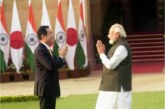The outcome of Conference of Parties-18 or COP-18 of the U.N. Framework Convention on Climate Change conference, held recently in Doha, Qatar, has been on expected lines. After a 48-hour marathon negotiating session—which regrettably has become typical in these yearly meetings—three distinct negotiating streams produced three overlapping but independent agreements. Finally, the negotiators decided to do the following:
- The Kyoto Protocol was reauthorized for another eight years, though fewer countries signed on so it now only covers some 12 percent of global emissions.
- The countries ended the negotiating track created in 2007 on “Long-term Cooperative Action,” which previously produced the Copenhagen Accords and the Cancun Agreements that drew up voluntary pollution-reduction commitments covering 80 percent of global emissions.
- The new negotiating track on the “Durban Platform for Enhanced Action”—which was designed last year to produce by 2015 a new treaty that is applicable to all parties and covers 100 percent of global emissions—took its first steps toward achieving those goals.
There has been a varied response to the meeting’s outcome and like the previous similar meetings; this response has been far from adequate to address the growing climate crisis. Tom Zeller Jr., writing in huffingtonpost.com described Doha talks as “as ever, beset by myriad divisions between rich nations and poor ones, between established economies and up-and-comers, and between, well, the United States and just about everyone else.”1
John Scales Avery of University of Copenhagen has opined that despite clear and unanimous warnings from the scientific community, “the United Nations Climate Conference in Doha (Cop 18) failed to reach an agreement suffciently strong to avoid dangerous climate change. The problemencountered by the conference was a deep disagreement between developed and developing countries.”2 Tweeting out of the conference, one of Argentina’s negotiators said the decisions “don’t feel ‘ground-breaking’ but are more likely saving face. What we got for it, only loss and damage and nothing else.”3
While striking an optimistic note, the conference President Abdullah bin Hamad Al-Attiyah of Qatar said: “Doha has opened up a new gateway to bigger ambition and to greater action – the Doha Climate Gateway… I thank all governments and ministers for their work to achieve this success. Now governments must move quickly through the Doha Climate Gateway to push forward with the solutions to climate change.”4
While describing the outcome ‘Doha Climate Gateway’ as “historic”, Ms Christiana Figueres, executive secretary of the United Nations Framework Convention on Climate Change said: “Now, there is much work to do. Doha is another step in the right direction, but we still have a long road ahead. The door to stay below two degrees remains barely open. The science shows it, the data proves it. The UN Climate Change negotiations must now focus on the concrete ways and means to accelerate action and ambition. The world has the money and technology to stay below two degrees. After Doha, it is a matter of scale, speed, determination and sticking to the timetable.”5
A snapshot of some overarching themes of the decisions that came out of the 18th session of the Conference of Parties (COP18) at Doha is provided here.
Extension of Kyoto Protocol
The Kyoto Protocol—the world’s only legally binding agreement on emissions reductions finalized in 1997—was set to expire at the end of December 2012, which could have terminated the global carbon market mechanisms that have been established to support it. A majority of countries agreed at the COP-18 to extend the protocol into a second term. This second commitment period will begin on January 1, 2013, and will conclude on December 31, 2020. They also agreed that a roadmap to create a deal to replace the Kyoto Protocol should be ready in 2015.
However, there are no firm commitments to take on deeper emissions cuts. And with Canada, Japan, New Zealand, Russia and the US opting out of the Kyoto Protocol, the protocol applies to only 15 percent of current global greenhouse gas emissions. Scientific organization, including the UN Environment Programme have warned that failing to further cut emissions could increase global temperatures by over four degrees Celius by the turn of the century.
The internationally embraced goal is to limit this warming to two degrees Celsius, but the International Energy Agency has shown that achieving this goal grows more difficult and expensive with every passing year. This means poor countries and aid agencies will have to contend with the possibility of more frequent and intense climatic events and the mounting costs associated with prevention, relief and recovery.
Climate Finance
Enhancing action on climate finance was a major sticking point. From 2009 to 2012 developed countries delivered $30 billion in “fast-start” finance for adaptation and mitigation measures. The success of this program was acknowledged in the final version of the Long-term Cooperative Action text. Developed countries reported in Doha that they had reached the $30 billion target, but this was disputed by academics and civil society.
The developed countries further indicated that, with the global recession, they are unable to make firm commitments to finance poor nations’ efforts to adapt. Instead, a decision was made to set up a work programme in 2013 to help developed countries identify ways to raise this money.
No global funding pledge has been for the interim period between 2013 and 2020. Individual pledges by five European countries – including the UK, France and Germany – have been made, but cumulatively, these fall far short of the $60 billion that developing countries had requested for the interim.
It is also not clear if the five pledges are specifically for climate change adaptation or if they are part of the Official Development Assistance (ODA) that developed countries provide to the developing world. The UNFCC requires that developed countries provide money for climate change adaptation that is additional to their ODA.
Loss and Damage
Poor countries, including small island states and the least developed countries, were looking for a decision to create an international mechanism to address losses and damages caused by climate change. The mechanism would open the door to possible compensation from affluent countries for poor countries facing the mounting costs of extreme climate events. It would consider both their economic and non-economic losses, and possibly explore technological interventions.
At the COP-18 in Doha this momentum turned into a call for more concrete steps forward. At the end of the conference, parties agreed to discuss the establishment of an international mechanism to address loss and damage that will be taken up for approval at the COP-19 climate summit taking place in Warsaw (Poland) in 2013.
The run up to this discussion will include an expert meeting to consider possible approaches to addressing slow-onset events of climate change, preparation of a technical paper on noneconomic losses to climate change, and preparation of a technical paper on gaps in institutional arrangements to address loss and damage both within and outside the U.N. process. Just as importantly, the parties agreed that “promotion of livelihood and economic diversification to build resilience” was vital in planning, priority setting, and implementation of adaptation actions.
The decisions on loss and damage echoes much of a framework proposed by a group of NGOs earlier in the conference, which had recommended focusing on the international mechanism, the work programme, and consideration of non-economic losses. But ultimately, the decisions are subject to money being made available for development of the work programme.
With the extension of the work programme, more information on possible policy approaches will be forthcoming. This will help humanitarian organizations better scale-up responses to extreme climate events, which are increasing in frequency and intensity.
But NGOs and the civil society will likely have to wait a long time for developed countries to make firm commitments on funding, risk transfer mechanisms such as insurance, and technology to help poor countries improve their resilience to climate change. Given that money to help vulnerable populations adapt has been ad hoc and insufficient, there is little optimism for funds being made available for compensation.
The Way Ahead
The global pledges to reduce emissions are still inadequate despite the success of the Long-term Cooperative Action text in drawing the major carbon emitters in to articulate what they are willing to do in the near term. U.S. Deputy Climate Envoy Jonathan Pershing, quoting President Barack Obama, had in his opening press conference in Doha in mid November this year, did not deny this, and instead stated categorically, “We haven’t done as much as we need to do.”
Regrettably, though, no country has come forward to offer decrease in carbon emissions in recent years; rather, some countries seem willing only to demand that other parties increase their emission reductions before they will make further commitments. A submission from Bolivia, China, India, Iran, Saudi Arabia, and a handful of other countries during the first week of the Doha meeting called for developed parties to “reduce their aggregate emissions by 40 to 50 percent below 1990 levels by 2020.” This would be twice the highest commitment of any party to these talks to date and is highly impractical.
Observers feel that no response to such requests in the affirmative in no way indicates a weakness of will on the part of concerned countries. However, it may be easier to address the current ambition gap by simply stipulating that other parties take it on entirely; nevertheless, it is equally harder to find a cooperative solution that is actually achievable and that appropriately divides burdens among the world’s largest carbon polluters.
Some experts see two top priorities for moving forward in international climate action that are both more cooperative and more realistic than the aforementioned submission. On the one hand, the incentives must be increased to bring more private finance into the overall package of climate finance, and on the other hand, action on greenhouse gases other than carbon dioxide must be increased in the near term.
Interestingly, the developed world [perhaps with the exception of the EU] had always been reluctant to accept binding emission cuts, but until now it at least appeared to take measures to fight climate change and help poorer countries do the same. But Doha, for all its drawbacks, has helped pull the veil of pretension off many a developed country’s face.
The reluctance on the part of the United States in this regard is well known. The US President Barack Obama’s victory speech in Chicago on 7 November 2012 included a special sentence: “We want our children to live in an America that isn’t burdened by debt, that isn’t weakened up by inequality, that isn’t threatened by the destructive power of a warming planet,” indicated that the president was talking about protecting children from climate change, but then he was referring to American children, not children in the rest of the world.
Viewed in a broad spectrum, concern for climate change should be global. Sectoral approach based on the particular interests of a nation in dealing with the climate change would not serve any purpose unless collective approach is adhered to in dealing with finding sustainable solutions to climate change.
Notes
- Tom Zeller Jr., “Climate Talks: Endless Treadmill, Without the Health Benefit”, 6 December 2012, available at http://www.huffingtonpost.com/tom-zeller-jr/global-climate-talks-doha-_b_2250905.html.
- John Scales Avery, “Failure of the Doha Climate Conference”, 13 December 2012, available at http://www.countercurrents.org/avery131212.pdf.
- “Climate Change: Snapshots of wins and losses at the Doha talks”, irinnews.org, 9 December 2012, available at http://www.irinnews.org/Report/96996/CLIMATE-CHANGE-Snapshot-of-wins-and-losses-at-the-Doha-talks.
- Cited in Economic Times, 10 December 2012.
- For details more details see, Christiana Figueres, “A universal pact is possible”, The Hindu, 16 December 2012.
Source: Third Concept/January 2013/Vol.26/No.311/P.no.15/


